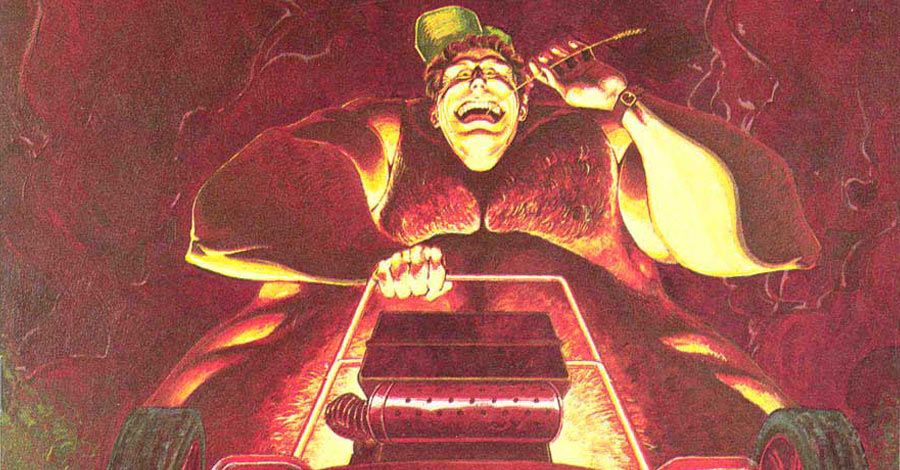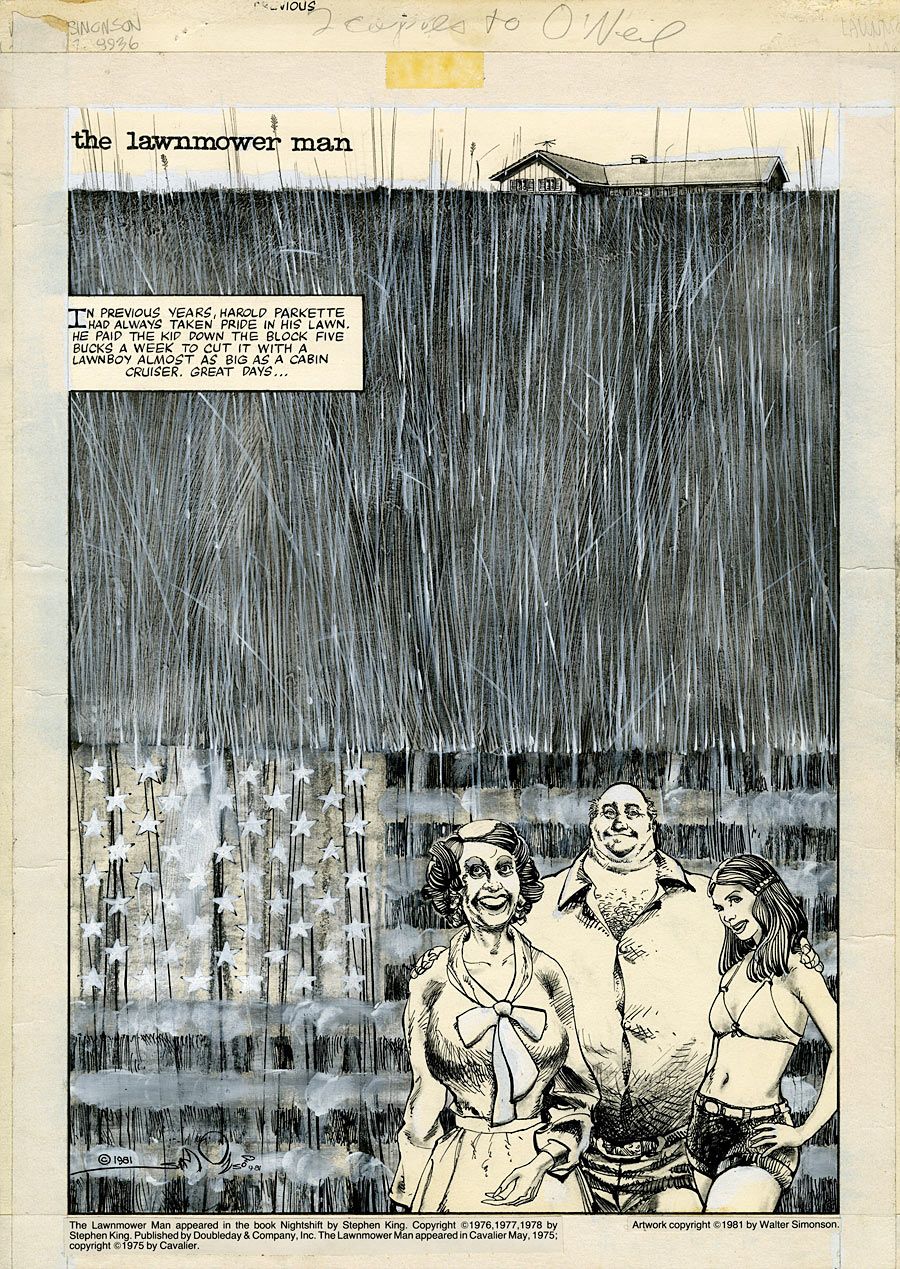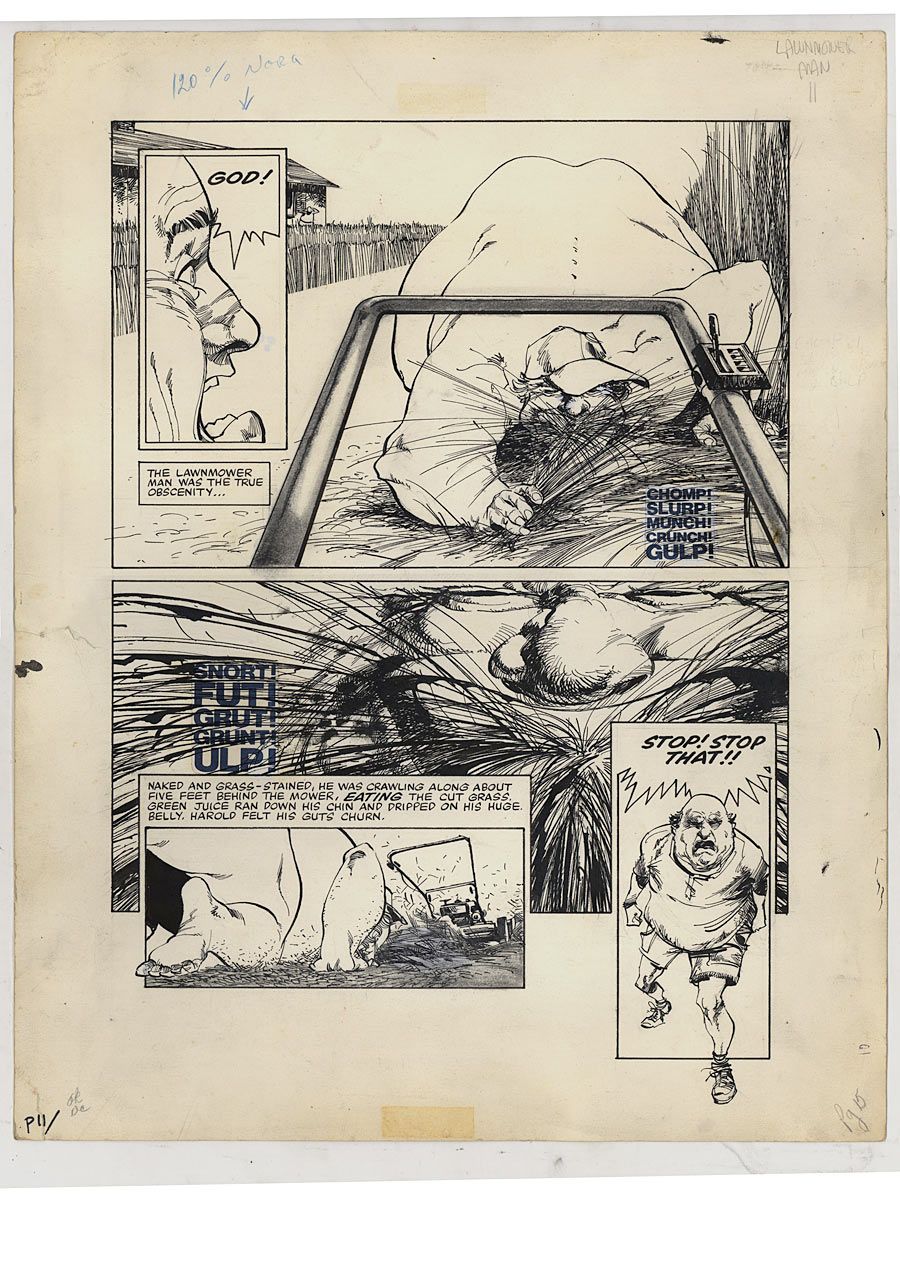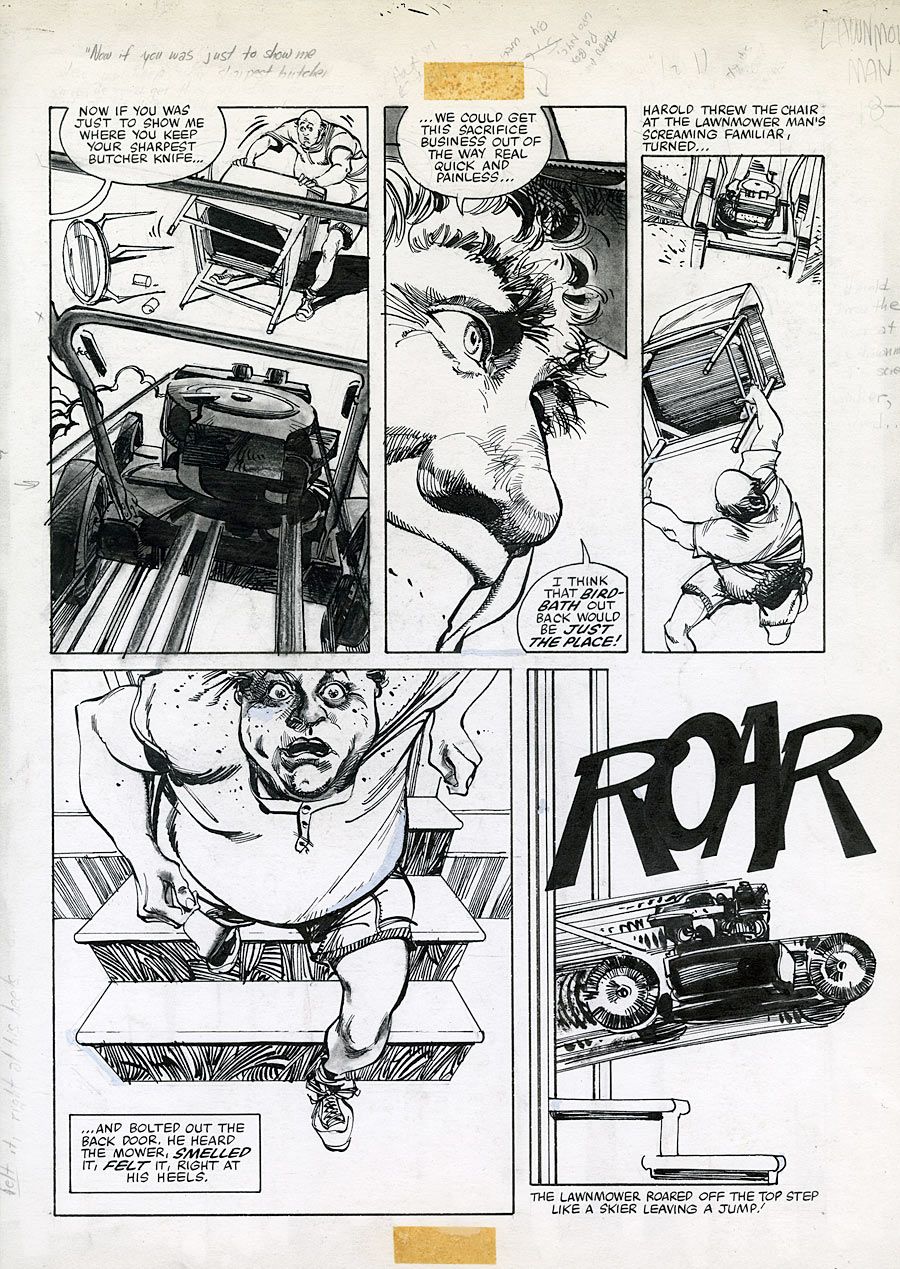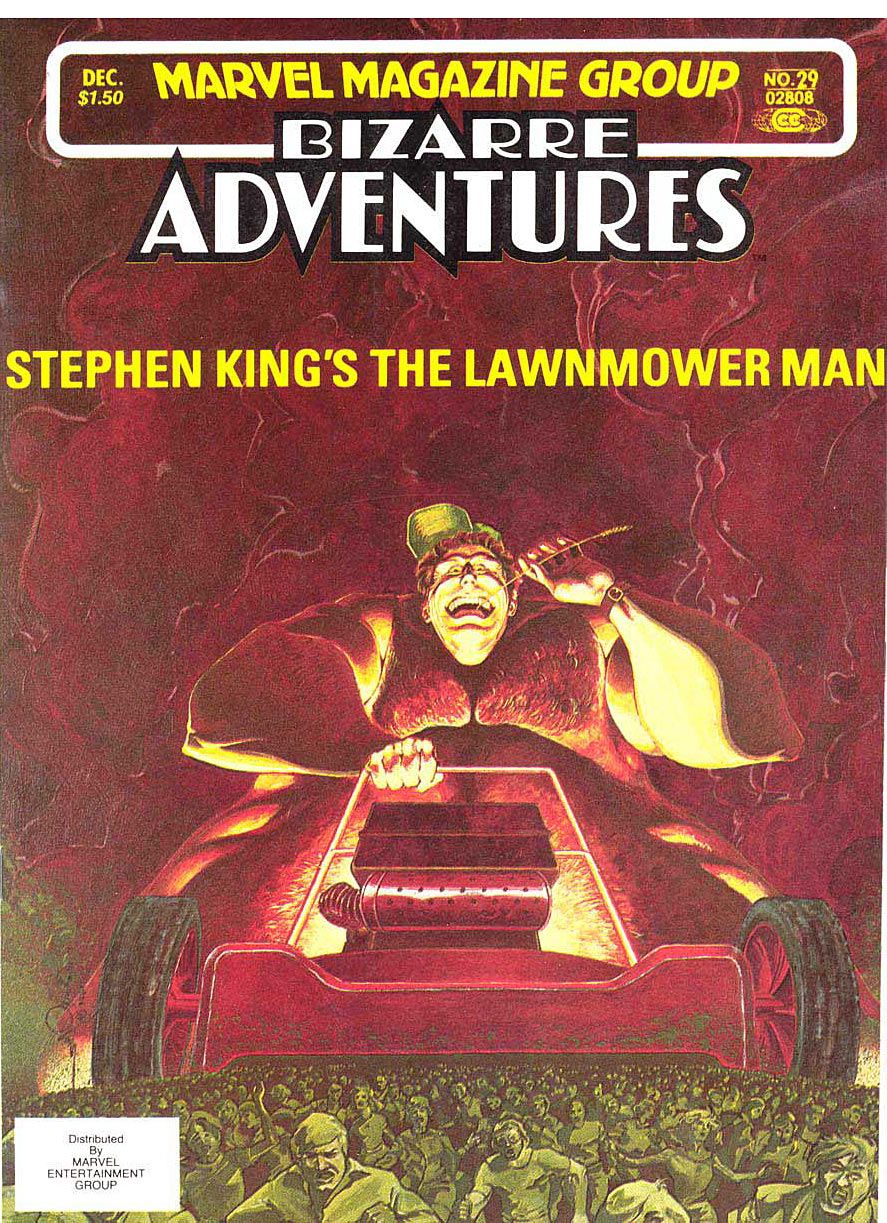This July, IDW Publishing revisits a team-up between two of fantasy's all-time greats with "Walter Simonson's Lawnmower Man: Artist's Edition Portfolio," based on the short story written by Stephen King. Scripted by King himself, "Lawnmower Man" originally debuted in Marvel's "Bizarre Adventures" #29 back in 1981 with art by acclaimed creator Walt Simonson.
Simonson chatted with CBR News about his classic collaboration with the king of horror, revealing how he hooked up with King back in '81, his love for H.P. Lovecraft and more.
CBR News: Walt, how did you get involved with "Lawnmower Man" back in 1981?
Walt Simonson: Well, it was a long time ago so this is all to the best of my memory. Denny O'Neil was the editor on "Bizarre Adventures," which was a black and white Marvel horror magazine back in the day. I don't know whether he was the one who arranged the license for it or if Marvel made contact with Mr. King at the time, but they got ahold of me and asked me if I'd like to draw the adaptation and I said sure. It was that simple on my end.
Were you aware of the short story beforehand?
I had read it. I liked King's work. I hadn't read much of it at the time, maybe two books probably. "Salem's Lot" and his first short-story collection ["Night Shift"], which had "Lawnmower Man" in it. I remember it had a picture of a hand with all these eyes on it for a cover. Really creepy. I really liked them, though. I was delighted to have a chance to draw one of the stories.
Did King write the script or did you adapt it to a graphic novel format yourself?
He wrote it. We did the story Marvel style. I say "we" but I never had any direct contact with King. We did it Marvel style though, which means I took the story, broke it down into pages, drew it and then this being the old days before we had computers and the internet, Denny sent the original pages to King. King then wrote the script from the drawings and panel breakdowns I had done. The funny part about that is that no one talked to him about it so he wrote it by actually writing the entire script in pencil all around the artwork. Right on the art. It totally killed me to have to erase all the stuff! The pages had to be cleaned up to be printed. It just killed me! [Laughs]
I thought King did a really nice job at his adaptation. You might say, "Oh, it's Stephen King, of course he would!" but I have seen some writers who don't do comics, but are still professional writers, do things in comic scripts that don't always work. If you go back and compare what King did in this with the short story, he personalized the comic story. He acknowledged that you're taking in information differently so by personalizing it he did an adaptation of the story in a visual way. It worked really well. I was delighted. I thought, "This guy gets it." It was really cool.
RELATED: Walt Simonson Remasters "Star Slammers," Talks "X-Men: Apocalypse"
I've seen the pages and you can see writing around the edges of some of them. Is that King's original handwritten script?
Anything that's writing is King's. I had to erase most of it though to print cleanly. There's definitely a page or two, though, where you can see writing partially erased near panels and that is King's actual writing. He wrote it in pencil, which was good because I can erase it, but it still did kill me to do it.
How did they find all the original pages for the Artist's Edition?
I have it all. I have all but one page. I traded a page to a friend of mine many years ago. But we're still friends so he very kindly sent me a scan back. So it was mostly a question of me trying to find the pages in my closet! [Laughs]
Do you usually hang on to your original pages?
I do. I don't sell my artwork generally. I have in the past. Once, a million years ago, I sold a page to see how it went. Then found I didn't have the artwork anymore and I spent the money. What's the point of that? Honestly, I've been very lucky. If I needed money, either because I hadn't done as well in my career or hit tough times, I would have sold the artwork to get along. In the old days I used to keep it because reproduction in comics was pretty poor back in the newsprint days and I wanted to be able to look at the art and see what I felt I had done wrong and what I could do better. When you reproduce the art you shrink it down. All your mistakes get smaller, too, which is the idea but it means you can't see things as clear, either. So I really wanted a chance to look at the original drawings and see how I could improve it. In comics, problems of storytelling in art come around again and again, so by studying my previous poor or not-as-great solutions I could do better down the road.
That said, I was in comics three or four years before art was even given back though, so keeping the art wasn't an option back then. I used to make photocopies of pages so I could get a look at them and try to do better next time.
You're well-known for your fantasy work, but do you have a soft spot for horror storytelling as well?
I do like horror. I'm not the horror fan some of my friends are, but I do like it. When I was much younger, high school, I read the first horror stuff I came across. Some of the Alfred Hitchcock anthologies from the '50s and early '60s that were collections of short stories. They were creepy horror stories of one kind or another. The other horror book I read that affected me was a collection of stories by Robert Block. It had the opener of "The Way," which was about Anubis. That was my introduction to horror and H.P. Lovecraft. I love Lovecraft. I've read all the Lovecraft there is, the complete H.P. Lovecraft over time. I liked Robert W. Chambers, too, who wasn't exclusively horror but had that bent to it.
It's fun to have different genres to work in. It creates different types of problems you have to solve as a storyteller. I think "The Lawnmower Man" did quite nicely in that regard.
Did you take the time to go see "The Lawnmower Man" film when it came out?
I never did. There was a sequel, too, and I've never seen either one of them. I gather that the first one didn't have very much to do with the story.
No, not so much. What sorts of extra materials did you unearth for the Artist's Edition?
I did a painted cover for "Bizarre Adventures" of "Lawnmower Man" that's in there. I don't paint very often. I'm not the world's greatest painter by a long shot but I think it worked out fairly well. I still have that painting. The painting itself is very large. I used really big paper so that when it was shrunk down my mistakes, of which there were a lot, would go away quietly. I learned because of that painting that Photoshop actually has a function. You can get it to marry images together like a collage using separate scans. I couldn't fit the canvas on one scan, I had to do it with four different scans. I discovered there was functions in Photoshop that did all that stuff for me automatically. Boy, that made my year to discover that. It was very cool.
"Walter Simonson's Lawnmower Man: Artist's Edition Portfolio" is out this July from IDW Publishing.

